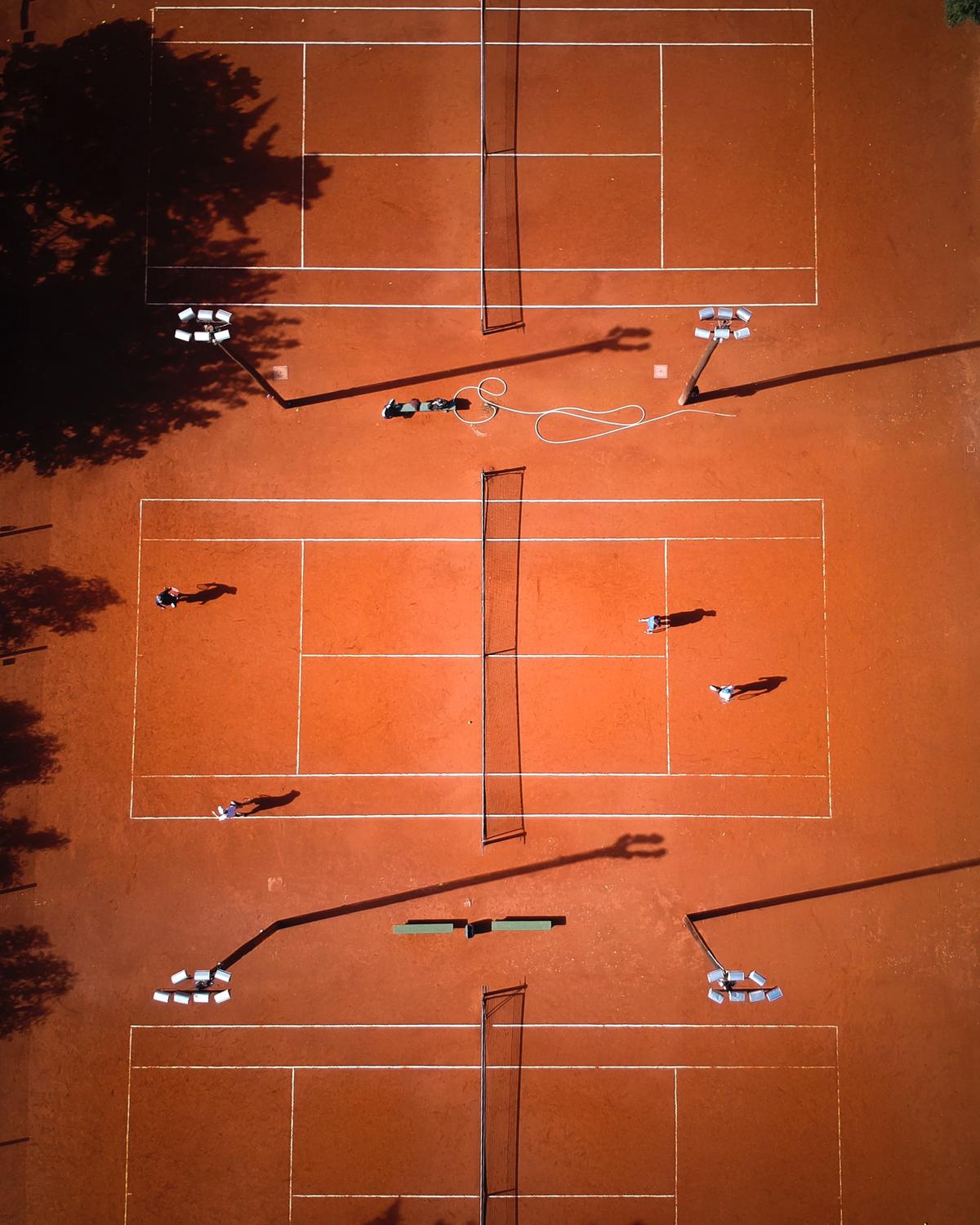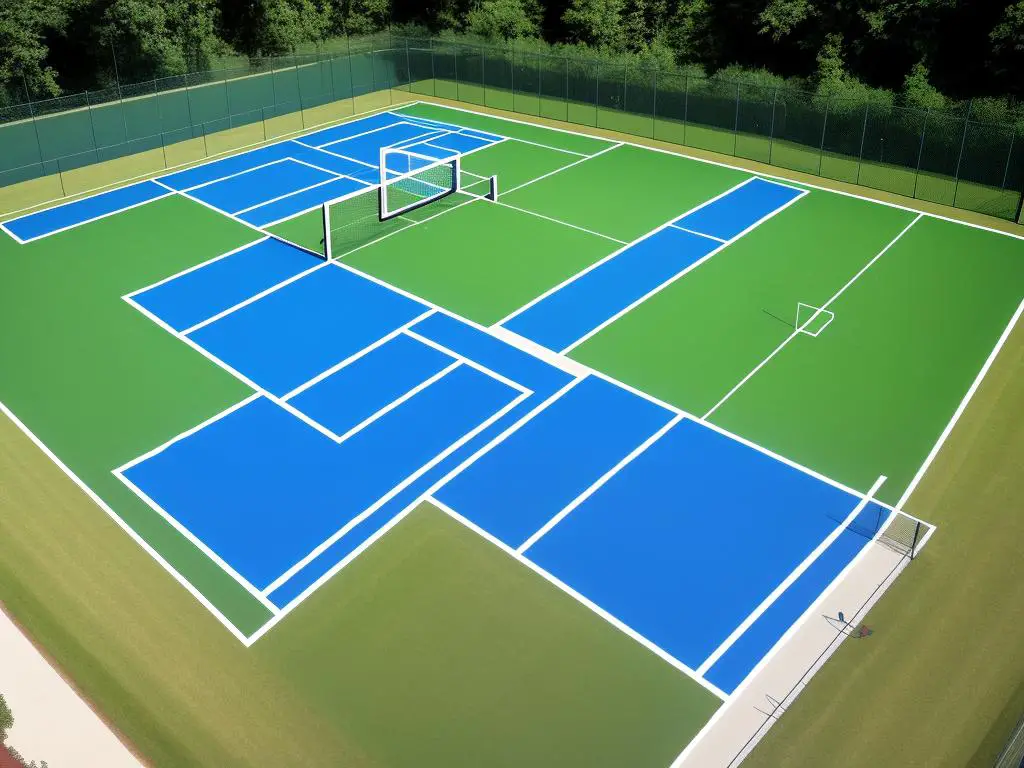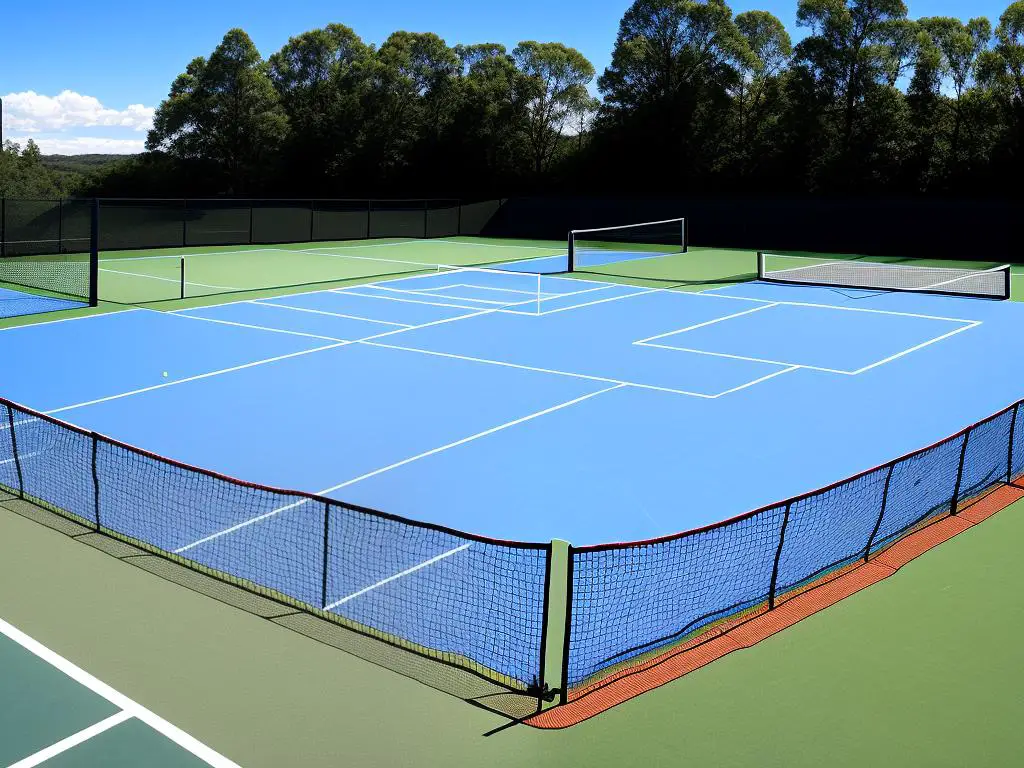Padel Tennis, a captivating racquet sport that originated in Mexico and has now spread its wings worldwide, is gaining popularity due to its simple rules and unique playing field: the Padel Court. The dimensions of this court play a crucial role in shaping the gameplay and strategy of this intriguing sport. This is because every element, from the playing area and wall height to the divider net, is meticulously crafted to enhance the game. By acquainting ourselves with these measurements, following the standard guidelines set by the International Padel Federation, we gain a comprehensive understanding of the sport. In addition, factors such as court construction using appropriate materials further contribute to the overall game experience. Lighting, nets installation, and the correct use of padel glasses all interplay with these set dimensions, directly influencing every drop shot, lob, smash, and serve.
Understanding Padel Tennis
Introduction: Taking a Swing at Padel Tennis
Padel Tennis, often simply known as Padel, has been growing in popularity in the recent years. Originally invented in Mexico in 1969, Padel is a racquet sport that is typically played in doubles. While it may seem similar to regular tennis at first glance, Padel is unique in its court layout and rule set, which contributes to a different and interesting gameplay.
Understanding the Padel Tennis Court
One of the first things you’ll likely notice about Padel tennis is its unique court. Traditional Tennis is played on a rectangular court with no walls. Padel, on the other hand, is characterized by a smaller, enclosed court with walls at all sides and the back, which are used as part of gameplay.
A Padel court measures 20 meters long and 10 meters wide, and it’s split in half by a net in the middle. There are also service lines parallel to the net and a line perpendicular to the net, creating a “service box” in each half of the court. Walls and fences about 3m high encase the court to allow ball play off the walls similar to Squash.
The Basics of Padel: Rules and Scoring
The basics of Padel scoring are similar to Tennis, and understanding the rules will enhance your Padel experiences. Padel uses the same scoring terms as tennis like Love, Fifteen, Thirty, Forty and Game. A set is won by the first side to win six games with a two game lead, or by winning a tie-break at six games all.
The most distinctive rule difference in Padel is that the ball can bounce off the walls surrounding the court. After the ball has bounced once on the court, it can hit any part of the surrounding walls and is still in play. This allows for a greater variety of shots and techniques, making the game a bit more challenging and dynamic.
It’s also important to note that services in Padel must be done underhanded, unlike in traditional Tennis where overhead serves are the norm.
Influence of Court’s Dimensions on Gameplay
Remember, Padel is played on a smaller, enclosed court. The enclosure and reduced playing area create a more intimate and faster-paced game, with a focus on strategy instead of power. While power and speed are integral in a game like Tennis, precision and strategizing play a bigger role in Padel.
Additionally, the walls surrounding the court add another dimension to the game, enabling players to use them strategically to outmaneuver their opponents. Therefore, understanding the dimensions of the court and mastering the use of the walls can really elevate your game.
Conclusion
Padel Tennis is a physically engaging game that requires a blend of precision, strategy, and power. It’s also a social game, best enjoyed in doubles. Once you understand the specific elements of the court, the basic rules, and the influence of the court’s dimensions on gameplay, you would be ready to serve, volley, and score in this exhilarating sport.

Photo by guzmanbarquin on Unsplash
Regulation Dimensions
Introduction: Padel Tennis Court Specifications
Padel, while not as popular as traditional tennis in the United States, is a rapidly growing sport worldwide. As you embark on this new adventure, understanding the specifics about the court size, wall height, and the divider net is crucial. These dimensions are defined by the International Padel Federation (FIP) to ensure uniformity in the game, regardless of where it’s played.
Playing Area Size
The first aspect to understand about a padel tennis court is its overall size. According to the International Padel Federation, the standard dimensions of a padel court are 20 meters long by 10 meters wide. This size includes the playing area and does not account for any additional surrounding space for players to move around off-court.
Wall Height
In padel tennis, walls are an integral part of the game. Balls can be played off of them similarly to racquetball or squash and they provide an extra dimension to the game. In accordance with FIP rules, the walls on the shorter side (10m) have a required height of 4 meters. For the longer side-wall (20m), the wall should be at least 4 meters high on the first 3 meters closer to the net and then 2 meters high for the remaining area.
Divider Net
The divider net in the middle of the court separates the playing areas for each team. The net has a standard height of 0.88m in the center, tapering off to 0.92m at the posts. This design creates a slight dip in the center which is, again, an international standard as set by the FIP.
Conclusion: Uniformity in Padel Tennis
Just like traditional tennis, padel tennis insists on strict regulation dimensions to keep the game uniform worldwide. From the overall size of 20m x 10m, the variable wall heights of 4m and 2m, to the net’s height of 0.88m in the center and 0.92m at the posts, these dimensions contribute to the unique character of the sport. As the sport of padel tennis continues to grow in popularity, so too will the recognition of these dimensions as key characteristics that define the game.

Court Construction
Understanding Padel Tennis Court Construction
Padel tennis is gaining popularity in the United States, given its unique and exciting spin on traditional tennis. One important aspect of it is understanding the intricacies of the court construction. Knowing the specifications can help lay the perfect foundation for a meticulous padel court.
The Padel Tennis Court Dimensions
A standard padel court is a rectangle measuring 20 meters by 10 meters (65.6 feet by 32.8 feet), enclosed by walls on all sides. The service line is placed 3 meters (9.8 feet) from the back wall, creating two equal sections of 3 meters and 7 meters (9.8 feet and 22.96 feet). This court is divided in the middle by a net, which is 88 centimeters (34.64 inches) high at the sides and 92 centimeters (36.22 inches) high at the center.
Materials Used in Court Construction
A variety of materials can be used in padel court construction. The playing surface is typically composed of artificial grass, with colors ranging from green to blue, to provide a soft yet robust foundation. The perimeter walls, usually 3 meters (9.8 feet) high, are made with a combination of structural steel and tempered glass. Steel mesh fences, about 4 meters (13 feet) high, are often installed on the ends of the court.
Installing the Padel Glasses
Tempered glass panels are installed on the back and sides of the court, acting as walls. These glasses are 10 or 12 millimeters thick and usually come in dimensions of 2 meters by 3 meters (6.56 feet by 9.8 feet). They should be installed securely as they are essential in absorbing the impact of the padel ball during games.
Setting the Lights up
A critical part of court construction is the lighting setup. Typically, LED floodlights are used to evenly illuminate the entire court. They should be positioned strategically to minimize shadows and eliminate glare, which can hinder player visibility. Four to eight lights may be used per court, depending on the dimensions.
Install the Padel Nets
Finally, installation of the padel nets divides the court into two equal halves. They are usually made of braided black nylon and include a white canvas band at the top. The net should be securely attached to metallic posts on either side of the court and must stay taut during the game.
In conclusion, constructing a padel tennis court involves meticulous planning and workmanship, involving accurate dimension adherence, correct material usage, and careful installation of the glasses, lights, and nets. With these considerations, you can create a professional-grade padel tennis court that meets all standards.

Despite its simplicity, Padel Tennis has numerous facets that contribute to its dynamic and engaging nature. Understanding the measurables of the court is paramount in mastering the game or simply appreciating its nuances more deeply. The dimensions of the court are intricately linked with gameplay, affecting the trajectory of every shot, the bounce of the ball, and players’ mobility. Taking into account factors like wall height, playing area, and the divider net reveals the sport’s intricate architecture and the intertwined relationship between players and their playing field. From crafting an effective strategy to countering the opponent’s serve, these insights into the court’s construction, including installations like lights, nets, and padel glasses, help give a comprehensive understanding of this thrilling sport.